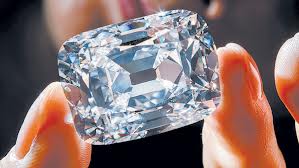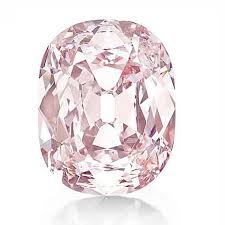— Place your jewels to be cleaned on a towel in the kitchen or bathroom next to the sink.
Tag Archives: diamond expert
Diamonds Type IIa and Golconda Diamonds


 I get excited about this subject — Golconda and/or Type IIa diamonds. Most people and diamond dealers think that diamonds are diamonds, and that they are all the same. So not true! There is a diamond region in India called Golconda. The Golconda region was at the time the only source of diamonds from the 4th century BC until 1700 AD. The white diamonds that came from that region were some of the most beautiful diamonds in history. The diamonds are described as watery, limpid, whiter than white, Ice white. I could go on and on. Natural Color diamonds also came from that region. When you look into a Golconda diamond either white (or colorless ), pink, or blue, the look is like no other diamond. Ice clear. Stunning! You can see what I mean in the images above. Nowadays, Type IIa diamonds come from many other parts of the world and are rare. Just know that the diamond crystal from the Golconda region is chemically different from any other Type iia diamond crystal. This makes their stone extremely rare! Who doesn’t LOVE a Golconda Type IIa diamond?
I get excited about this subject — Golconda and/or Type IIa diamonds. Most people and diamond dealers think that diamonds are diamonds, and that they are all the same. So not true! There is a diamond region in India called Golconda. The Golconda region was at the time the only source of diamonds from the 4th century BC until 1700 AD. The white diamonds that came from that region were some of the most beautiful diamonds in history. The diamonds are described as watery, limpid, whiter than white, Ice white. I could go on and on. Natural Color diamonds also came from that region. When you look into a Golconda diamond either white (or colorless ), pink, or blue, the look is like no other diamond. Ice clear. Stunning! You can see what I mean in the images above. Nowadays, Type IIa diamonds come from many other parts of the world and are rare. Just know that the diamond crystal from the Golconda region is chemically different from any other Type iia diamond crystal. This makes their stone extremely rare! Who doesn’t LOVE a Golconda Type IIa diamond?
Introducing The Diamond Expert
I have been in the Diamond business for 36 years.
I LOVE what I do ! I find the best diamond for my clients at the best price possible!
Since I started my business I have been obsessed with everything to do with diamonds — the Cut, Color, and Clarity.
One thing to know — not all diamonds are the same, as most people think.
The diamond crystal is not the same. Diamonds come from all over the world and they all are made up of the same material, but they may have been created under different circumstances. Think of it this way — a chocolate cake is a chocolate cake, but all will look different and taste different, depending on who makes it.
Also, most people think that diamonds are indestructible which they are NOT! You can chip, crack, break and even bruise a diamond. I know ! Who ever heard of bruising a diamond???? I bruise my leg as we all have done. And so can you bruise a diamond.
These are just a few of the things I’d love to share with you. With my blog, “The Diamond Expert,” I will try to walk everyone through the amazing and complex world of diamonds and share the rarity and wonderful qualities of each crystal.
On to the world of DIAMONDS and Blogging!
Gerald David Bauman, The Diamond Expert.
